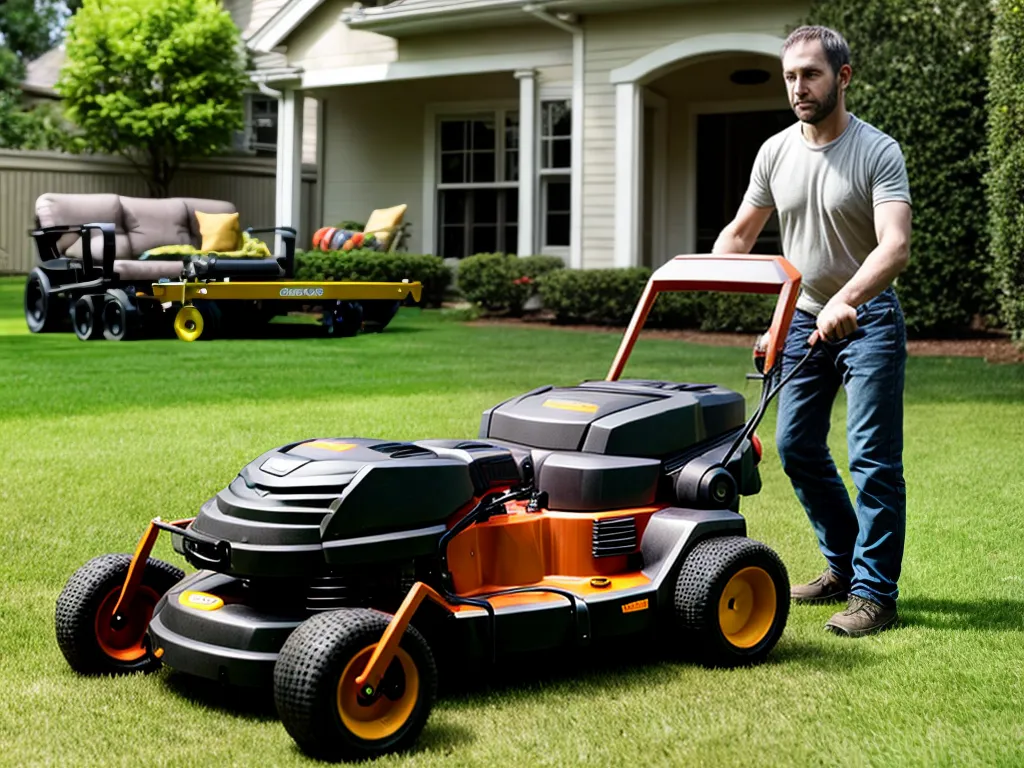
How to Rewire a Lawnmower
Introduction
Rewiring a lawnmower can seem daunting, but with some basic knowledge and the right tools, it's quite manageable. In this guide, I'll walk through the complete process of rewiring a standard walk-behind lawn mower from start to finish.
Whether you need to replace old, worn wiring or you want to upgrade to a newer ignition system, following these steps will help you get the job done right. Proper wiring is essential for a mower to start and run safely and efficiently. With a little time and patience, you can rewire your mower yourself and save the cost of professional repair.
Things You'll Need
- Wire strippers
- Pliers
- Screwdrivers
- Electrical tape
- Replacement spark plug wire
- New ignition switch (if needed)
- Wiring diagram for your mower model
- Safety glasses
Having the right tools and components upfront will make the rewiring job much easier. The key tools are wire strippers, pliers, screwdrivers, and electrical tape. You'll also need any replacement wires or ignition parts. Most importantly, find a wiring diagram specific to your lawn mower model. This will show connector locations and wire routing.
Disconnect the Battery
The first step in any mower rewire job is to disconnect the battery. The battery powers the ignition system and you'll be working with live wires. Locate the battery, then disconnect the negative (-) black ground lead first, before disconnecting the positive (+) red lead. This avoids short circuits while disconnecting.
With the battery disconnected, the mower wiring is now safe to access and modify. Make sure the battery leads are kept separate while working to avoid accidental reconnection.
Inspect and Replace Worn Wiring
Before adding any new wiring, it's a good idea to inspect the existing mower wiring for damage. Look for:
- Brittle, cracked insulation
- Exposed copper wire
- Wires damaged by heat, liquid, or chemicals
- Corroded connections
Any worn sections of original wiring should be replaced. Damaged wiring can cause short circuits, electrical fires, or prevent the mower from starting. Replace individual wires or entire wire harnesses as needed. Use wiring with similar gauge and insulation to the original.
Disconnect Old Wiring Connections
With the inspection complete, the next step is to disconnect any wiring connections needed to access or replace the wiring.
- Remove wire connectors at the ignition module and other components
- Unbolt or unclip any wire looms or conduits
- Label wires as they are disconnected to aid re-assembly
Taking photos of the wiring before disassembly can also help during reconnection. Be organized and store parts together.
Install New Wire Harness
If fully replacing the mower wiring, you'll need to install a new wiring harness. This includes:
- Routing wires properly through the frame tubing
- Securing wires with clips and looms
- Making sure slack is available at moving joints
- Avoiding hot or rotating parts that could damage wires
Follow the wiring diagram for your mower to ensure correct wire routing. Improperly routed wiring can rub and short circuit. Take time to run wiring neatly through the frame.
Reconnect Wires and Battery
With the new wiring in place, reconnect any connectors and components. Double check that everything is wired properly according to the diagram. Secure any loose wiring with ties or conduit.
Once all wiring connections are completed, reconnect the mower battery, positive lead first. This will power up the system. Carefully check wire routing and connector security before testing.
Test Mower Operation
With the rewire complete, it's crucial to test operation before regular use.
- Check wire connections for any sparks or hot spots
- Start the mower and let it run for several minutes
- Watch and smell for burning insulation which indicates short circuits
- Listen for sudden stops, which could indicate an intermittent connection issue
Make any needed adjustments. The mower should now run properly without issues. Enjoy your rewired mower!
Troubleshooting Tips
If the mower won't start or cuts out after rewiring, here are some troubleshooting tips:
- Double check for loose connectors - Loose wires can intermittently cut power
- Inspect wire routing - Make sure wires aren't binding or chafing
- Check for short circuits - Isolate any melted or bare wires
- Test ignition parts - The spark plug, switch, or module may be faulty
- Review the wiring diagram - A misplaced wire can cause problems
- Check battery charge and connections - Weak battery voltage prevents starting
Carefully go through the wiring and ignition components until the issue is found. Check for any wiring errors against the diagram. With patience, you can get your rewired mower running smoothly.
Conclusion
Rewiring a lawn mower may seem complicated, but taking methodical steps makes it very manageable:
- Disconnect the battery
- Inspect and replace damaged wiring
- Disconnect wire connections
- Install new harness correctly
- Reconnect wires and battery
- Thoroughly test operation
Following the wiring diagram closely along with troubleshooting tips will help get your mower running again. With the right replacement parts and tools, you can do a complete lawn mower rewire yourself. Just allow plenty of time and work cautiously. Soon you'll be mowing grass again with a dependable machine.